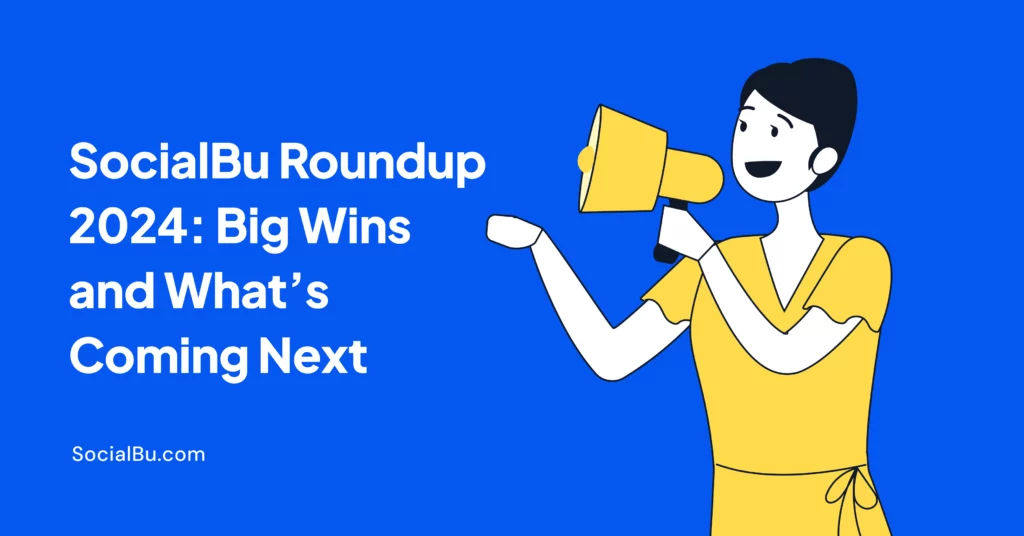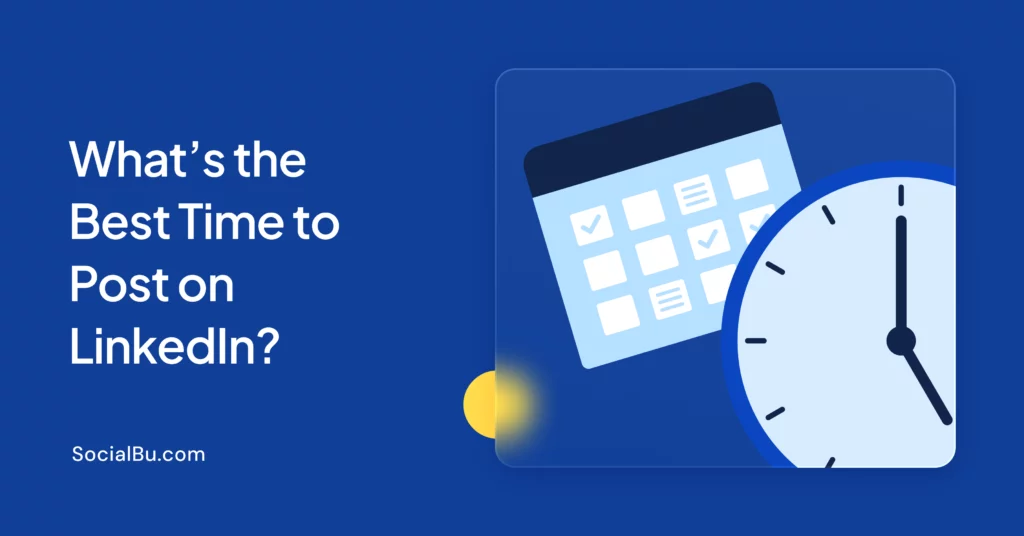Social media benchmarks are the most confusing part of marketing. Most reports are a mess because they compare different kinds of numbers. Like your engagement based on ‘reach’ against a competitor’s based on ‘followers’. This leads to bad choices.
This guide fixes that problem. We looked at all the new reports and platform changes to give you simple, straight answers so you can stop guessing.
Here is what you will find inside:
- The right formula to use.
- Honest 2025 industry numbers.
- Straight comparisons.
- When to use reach vs. followers.
Is 2% Engagement Good? Here’s How to Know
Social media benchmarks are the average results (like engagement rates or impressions) for your industry or platform, used as standards for comparison. They essentially represent the “norm” of success that brands in your category are achieving.
Benchmarks answer questions like “Is 2% engagement good or bad for my field?” by providing that context.
They Provide Goalposts, Not Just Gut Feelings
This means you can compare your performance to the industry average. If your engagement is above it, you’re winning; if below, you may need strategy tweaks.
Contextualize Your KPIs
Tracking your metrics over time is useful, but without industry context, it’s like having a thermometer with no temperature scale. Benchmarks turn those raw numbers into meaningful insights.
For example, knowing that healthcare content typically has lower reach than entertainment helps set realistic goals.
Calculate Engagement and Reach Correctly
Engagement rate is typically calculated as (interactions/followers) × 100%, and formulas vary by platform.
Benchmarks often use these percentages.
Similarly, “impressions benchmarks” track the average reach per post. If Instagram impressions grew 13% YoY recently, that becomes a new baseline to compare against.
Use Multiple Benchmark Sources
Industry reports (Hootsuite, Sprout Social, RivalIQ, HubSpot, SocialInsider) publish updated data. For example, Sprout Social’s 2025 Content Benchmarks showed Instagram engagement jumping 28% year-over-year. It is a clear sign that brand expectations are rising.
Also note that HubSpot, 93% of marketers plan to maintain or increase social investment in 2025, implying benchmarks will continue climbing.
What Is the Formula for Social Media Engagement Rate?
Engagement rate is typically calculated as (total interactions ÷ follower count) × 100%.
Because every network rewards interactions in its way, the exact engagement formula shifts by platform. Use this table as your go-to reference.
| Platform | Engagement Formula | Notes / Nuances |
| (Reactions + Comments + Shares) ÷ Fans × 100% | For video posts, add views + reactions | |
| (Likes + Comments) ÷ Followers × 100% | Stories can follow similar formulas | |
| Twitter (X) | (Likes + Retweets) ÷ Followers × 100% | Replies are often tracked separately as “conversation rate” |
| TikTok | (Likes + Comments + Shares + Saves) ÷ Followers × 100% | Shares and saves weigh heavily in TikTok’s algorithm |
Each network’s report formats engagement differently, but the core idea is the same. You’re measuring what percentage of your audience engaged with a given post.
Benchmarks are often reported “per post” or “per follower” using these formulas. Always specify if your benchmark is per post or follower.
Are Your Numbers Lying to You? Benchmarks Reveal the Truth
Benchmarks tell you where your performance stacks up in a crowded, changing social landscape. Social media moves fast with algorithm tweaks, new networks rise, and audience behaviors shift.
Benchmarks help you understand trends, adjust strategy, and celebrate real wins (or catch problems early).
In 2024–25, engagement on some networks has skyrocketed while others stagnate. For example, Instagram’s average engagement rate dropped 28% year-over-year to ~0.50%, whereas TikTok stayed around ~2.5%.
Without that context, a 1% rate on Insta might look like a victory, but benchmarks reveal it’s twice the norm.
Spot Platform Shifts
- Social media engagement rate benchmarks reveal TikTok leads (~2.5% organic engagement).
- Instagram (~0.5%) and Facebook (~0.15%) trail in performance metrics.
- Tracking benchmarks ensures your marketing strategy adapts to platform changes.
- Without social media analytics, you risk using outdated tactics.
Set Realistic, Data-Driven Goals
- Replace guesswork with social media engagement rate benchmarks to set targets.
- Example: Facebook engagement climbed 9% in 2024 (Sprout Social).
- Benchmarks highlight gaps between your results and industry performance metrics.
- Data-driven goals align teams and justify marketing strategy budgets.
Allocate Resources Smartly
- Social media analytics show posting frequency varies by region.
- North America averages 9.5 posts/day vs. APAC’s 20/day.
- Government accounts in NA drive the highest inbound engagement rate (~3,158 daily).
- Benchmarks guide a more brilliant marketing strategy and resource allocation.
Benchmark Your Success
- Social media engagement rate benchmarks give weight to performance reports.
- Example: 10K impressions is twice the benchmark of 5K.
- Performance metrics prove ROI to stakeholders.
- Benchmarks let brands strengthen their marketing strategy narrative.
At this point, you might think, “This sounds great, but compiling all these social media analytics manually is a headache.” Use SocialBu for this.
It can automatically track engagement, impressions, follower growth, and more across all your accounts, which can improve your marketing strategy. Instead of digging for data, you’ll spend time acting on it.

How Do I Set Social Media Benchmarks?
Before you can improve, you need a clear yardstick. Social media engagement rate benchmarks help marketers and agencies compare their results with industry averages, set realistic goals, and track progress using social media analytics.
Here’s a step-by-step way to establish benchmarks that guide strategy:
Step 1
- Gather your historical performance metrics.
- Review the past 6–12 months of data for each platform, including followers, likes, comments, shares, and impressions.
- Document your personal engagement benchmarks, growth rates, and reach.
- This becomes your baseline for measuring progress.
Step 2
- Compare with industry averages.
- Look at published benchmark reports from reputable platforms to see how your sector performs.
- For example, higher education accounts average around 2.99% Instagram engagement, while nonprofits reach 1.04%.
- These social media engagement rate benchmarks provide realistic target reference points.
Step 3
- Adjust for your specific circumstances.
- Keep in mind that engagement benchmarks vary across industries, campaigns, and regions.
- For example, if HubSpot reports that 93% of marketers plan to increase social activity in 2025, your benchmarks should reflect that momentum.
- Seasonal trends matter too. For example, retail brands often see higher engagement on Instagram during holiday shopping periods, while travel and hospitality accounts peak in summer when audiences are planning vacations.
Step 4
- Set measurable, platform-specific goals.
- Translate industry averages into achievable targets.
- If your Instagram engagement rate is 1.5% while the industry average is 3%, aim for 2.5% in 2025.
- Define goals per channel, such as “Increase TikTok engagement rate from 1.8% to 2.5%.”
- Use social media analytics to track progress weekly and adjust your content strategy when needed.
Step 5
- Review and refine benchmarks regularly.
- Since performance metrics evolve, your benchmarks must too.
- For example, if a report says a 15% increase in Facebook reach for your sector, adjust targets accordingly.
- This ongoing cycle of data collection, comparison, and refinement keeps your strategy aligned with real-world trends.
Plan content for every platform. SocialBu’s all-in-one publishing calendar lets you queue posts across Facebook, Instagram, X (Twitter), TikTok, and more from a single dashboard, saving hours.
What Are Social Media Benchmarks by Industry?
The numbers below are from Q4 2024, published on January 31, 2025, and come from the definitive Hootsuite social media benchmarks. These are the go-to social media benchmarks that many marketers and businesses use.
- (ER = engagement rate by reach unless otherwise noted.)
- For industries that Hootsuite doesn’t cover in detail (like Higher Education), we also looked at Rival IQ’s 2025 industry report. This gives extra context on engagement rate benchmarks and standout trends.
- Since April 21, 2025, Instagram has changed how it tracks performance. It has replaced “impressions” with “views.” If your reports still show social media impressions, make sure to adjust or note this difference before comparing with any social media impressions benchmark.
Social Media Benchmarks Comparison Table
| Industry | Reels | TikTok | X (Twitter) | |||
| Agencies/Marketing | 3.4% | 2.6% | 0.7% | 1.7% | 1.7% | 3.7% |
| Education | 4.2% | 3.1% | 2.3% | 2.2% | 2.4% | 2.8% |
| Media and Entertainment | 3.0% | 2.7% | 1.8% | 0.8% | 1.7% | 2.0% |
| Financial Services | 3.8% | 3.1% | 1.6% | 1.8% | 2.1% | 3.2% |
| Dining/Hospitality/Tourism | 3.1% | 2.6% | 1.3% | 1.3% | 2.0% | 3.9% |
| Government/Public Sector | 3.5% | 2.6% | 1.6% | 1.5% | 1.7% | 2.7% |
| Healthcare/Pharma/Biotech | 3.7% | 2.7% | 1.0% | 1.9% | 2.3% | 3.3% |
| Real Estate/Legal/Professional | 3.7% | 3.0% | 0.9% | 1.5% | 1.6% | 3.2% |
| Consumer Goods and Retail | 3.0% | 2.4% | 1.6% | 1.0% | 1.7% | 3.9% |
| Construction/Mining/Manufacturing | 4.4% | 3.4% | 2.6% | 1.7% | 2.4% | 4.0% |
| Technology | 3.3% | 2.5% | 0.7% | 0.9% | 2.2% | 3.6% |
| Utilities and Energy | 3.8% | 3.8% | — | 1.6% | 2.4% | 3.3% |
| Nonprofit/NGO | 4.4% | 4.0% | 1.3% | 1.8% | 2.1% | 3.0% |
| Other | 3.5% | 2.7% | 1.0% | 1.5% | 1.7% | 3.8% |
If you’re wondering about HubSpot social media benchmarks specifically, HubSpot’s 2025 marketing surveys indicate that almost everyone is doubling down on social.
For example, 93% of marketers plan to maintain or increase social media spend. That includes engagement and reach targets, which are generally rising. So whether you’re B2B or B2C, expect benchmarks to creep upward and plan accordingly.
SocialBu’s unified inbox lets you engage promptly across platforms so you don’t lose engagement with slow replies.
Respond to all comments, messages, and reviews from one place with SocialBu, and you can keep these engagement metrics healthy.

How to Turn Benchmarks Into Action With Socialbu
Benchmarks tell you the score. An innovative platform helps you change it. Here’s how SocialBu connects benchmark data to your daily workflow, helping you move from just tracking numbers to actively improving them.
See Your Performance in One Place
- Instead of juggling spreadsheets, you can see all your key metrics like engagement, reach, and follower growth in a single dashboard with an analytics feature.
- This allows you to instantly compare your performance against your target social media benchmarks and spot trends without manual data entry.
Track Your Competitors
- You can monitor competitor accounts (using their publicly available data) to see how your performance stacks up in real-time.
- This turns abstract social media benchmarks by industry 2025 into a live view of what’s working for others in your space, whether you’re tracking higher education social media benchmarks or those for nonprofits.
Schedule Your Strategy into Reality
- This is how to set social media benchmarks and follow through.
- If your analysis shows that carousels are outperforming single images, you can use the content calendar to schedule more of them.
- Features like bulk scheduling and post repurposing help you hit your ideal posting frequency consistently.
Manage Engagement from a Single Inbox
- Responding to your community is key to healthy engagement rates.
- A unified inbox brings all your comments and messages together, making it easier to ensure no interaction is missed.
- Faster, more consistent replies can help support and grow your engagement over time.
Get Data-Informed Suggestions
- Use SocialBu’s AI-powered tools to get suggestions for new content ideas and optimal posting times based on your account’s past performance.
- You can test these recommendations to see if they help improve your social media impressions benchmark for key campaigns.
In short, benchmarks provide the “what.” A platform like SocialBu offers the “how.” It closes the loop between seeing the data and acting on it, helping you move from simply tracking social media benchmarks to building a strategy to outperform them.
The Final Verdict on Benchmarks
Here’s the simple secret to making your social media metrics work for you: measuring accurately.
When you measure your engagement the same way every time, your trend lines will finally show something you want to achieve.
The key takeaway is that consistent calculations are what turn social media benchmarks from confusing data points into a clear roadmap for growth. A stable formula gives you a stable foundation to build on.
When your measurement is precise, your strategy becomes clear. You can confidently double down on what’s working and move on from what isn’t, turning insights directly into smarter content.
Next Steps:
- Lock Your Formula: Pick one for each use case (reach, impressions, etc.).
- Know Your Baseline: Start with your 90-day average.
- Compare to Your Peers: Use current, industry-specific data.
- Automate the Work: Let a tool handle the calculations.
Ready to see your progress? SocialBu makes consistent measurement effortless. Start your free trial now and connect your accounts to turn benchmarks into real, measurable growth.
Frequently Asked Questions
What is the 70/20/10 rule in social media?
A content strategy split where 70% of posts are proven content to build the brand, 20% are curated from others, and 10% are experimental or promotional.
What is the 5 5 5 rule on social media?
A daily engagement tactic: follow five, unfollow five, and engage (tweet or similar) five times.
What is a good CTR for social media?
A substantial CTR for social ads is generally considered above 5%, though benchmarks vary by platform and industry.
What is the 50 30 20 rule for social media?
A content mix: 50% value-driven posts (educate/entertain), 30% curated content, 20% promotional content.
What is the 4-1-1 rule in social media?
For every six posts: 4 share others’ content, one is original/educational, and one is promotional.
What is the 33 33 33 rule in social media?
Strategy balance: split content equally among promotional, interactive, and shared content.
What are the four V’s of social media (or big data)?
They are Volume, Velocity, Variety, and Veracity—the key characteristics defining big data in social media analytics.
What are the 5 C’s of social media?
A foundational social media strategy framework: Content, Community, Conversation, Collaboration, and Conversion.







